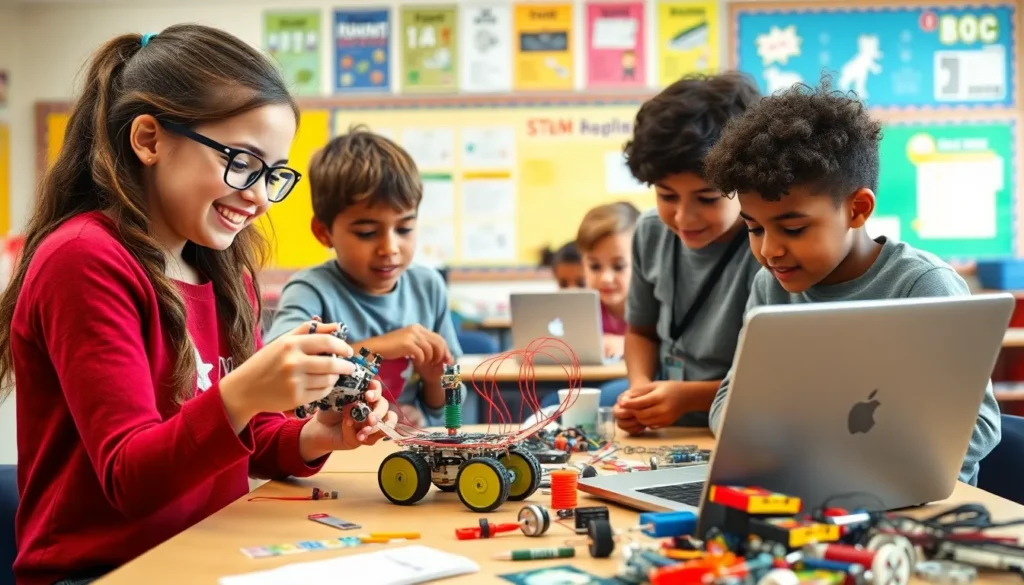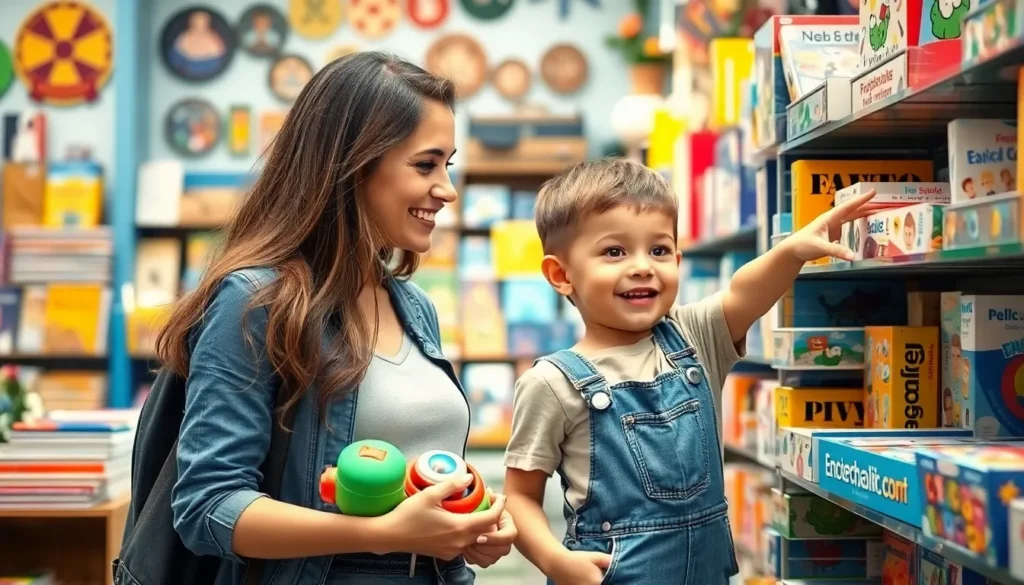Table of Contents
ToggleIn a world where technology reigns supreme, it’s crucial to equip the next generation with the skills they need to thrive. Enter STEM education kits—the secret weapon in the battle against boredom and the gateway to a future filled with innovation. These kits aren’t just boxes of random parts; they’re treasure troves of creativity, curiosity, and a sprinkle of scientific magic.
Imagine kids building robots that can dance or launching rockets that could rival NASA. With STEM kits, learning transforms into an adventure, making science, technology, engineering, and math as exciting as a rollercoaster ride. They offer hands-on experiences that ignite passion and foster critical thinking. So why not turn your living room into a mini-laboratory? After all, who wouldn’t want to say their child’s latest hobby involves engineering a catapult while wearing a lab coat?
What Are STEM Education Kits?
STEM education kits are hands-on learning tools designed to engage children in science, technology, engineering, and mathematics. These kits provide interactive experiences that promote problem-solving and critical thinking skills. Children can conduct experiments, build structures, and program robots using the kits, making learning both enjoyable and effective.
Kits often include materials and instructions for multiple projects, allowing kids to explore various concepts. For example, a robotics kit may consist of motors, sensors, and programming software, enabling children to create functional robots. Similarly, a chemistry kit might come with safe materials for experiments, fostering curiosity about chemical reactions.
STEM kits cater to different age groups and skill levels. Younger children might focus on simple engineering tasks, such as building bridges or towers, while older students could tackle more complex projects like coding or conducting scientific experiments. Many kits also emphasize collaboration, encouraging teamwork among peers as they work on projects together.
Benefits of STEM education kits extend beyond academic knowledge. They foster creativity by challenging children to think outside the box and devise unique solutions to problems. By integrating fun with learning, these kits inspire a lifelong interest in STEM fields, equipping the next generation to thrive in a technology-driven world.
Parents looking to enhance their children’s education can consider investing in these kits. With diverse options available, every child can find a kit that aligns with their interests and learning goals.
Benefits of STEM Education Kits

STEM education kits offer numerous advantages that promote holistic development in children. These kits not only impart knowledge but also instill essential skills.
Encouraging Critical Thinking
Critical thinking skills emerge as children engage with STEM kits. Kids analyze challenges, develop hypotheses, and test solutions. Many projects require problem-solving, pushing them to think creatively about various outcomes. Building robots or conducting experiments invites them to ask questions and draw conclusions based on their findings. Such activities enhance their analytical abilities, preparing them for real-world scenarios where critical thinking is vital.
Fostering Collaboration
Collaboration is another key benefit of STEM education kits. Many projects encourage kids to work in teams, reinforcing the importance of teamwork. They share ideas, solve problems collectively, and communicate effectively to achieve common goals. This interaction builds social skills while nurturing a sense of community among peers. Group activities stimulate discussion, allowing each child to contribute unique perspectives, fostering an inclusive learning environment that benefits everyone involved.
Types of STEM Education Kits
STEM education kits come in various forms, each designed to engage students in unique ways. These kits foster exploration in different scientific fields, ensuring broad coverage of STEM concepts.
Robotics Kits
Robotics kits introduce children to the fundamentals of engineering and programming. They allow students to design and build robots using modular components, sensors, and motors. Engaging with robotics helps develop problem-solving skills while enhancing creativity. Kids learn to program their creations, making them move or perform tasks. Notably, these kits encourage teamwork when children collaborate on projects, promoting communication skills. Popular examples include LEGO Mindstorms and VEX IQ, which cater to various age ranges and skill levels.
Chemistry Kits
Chemistry kits provide hands-on experiments that demonstrate chemical reactions and principles. These kits often include safe materials, tools, and instructions for conducting experiments at home or in classrooms. Through activities like making slime or growing crystals, children gain a deeper understanding of scientific concepts. Experiments stimulate curiosity and enhance analytical thinking, while also reinforcing the scientific method. Notable kits include the Thames & Kosmos Chemistry C1000 and National Geographic Chemistry Set, targeting young scientists eager to explore the world of chemistry.
Coding Kits
Coding kits introduce children to programming through interactive platforms and engaging projects. These kits utilize visual programming languages, making it easy for beginners to grasp coding concepts. Students create games, animations, or apps while improving logical reasoning and critical thinking skills. Platforms like Scratch and Tynker enable kids to work at their own pace, fostering independent learning. Furthermore, some kits incorporate hardware, allowing students to create physical projects that combine coding with electronics, enhancing the overall learning experience.
How to Choose the Right STEM Education Kit
Selecting the right STEM education kit requires consideration of various factors. These aspects ensure a match between the kit and the child’s interests, maximizing engagement.
Age Appropriateness
When choosing a kit, age appropriateness plays a crucial role. Kits are often designed for specific age ranges, ensuring content aligns with cognitive and motor skills. For example, younger children benefit from simple projects that introduce basic concepts, while older students can tackle more complex challenges. Parents should pay attention to the age recommendations on packaging to find suitable options. Engaging children with age-appropriate kits fosters confidence and keeps them motivated.
Skill Level
Skill level significantly influences the choice of a STEM education kit. Beginner kits often focus on fundamental concepts, allowing children to build their foundational knowledge. As kids develop their skills, intermediate and advanced kits introduce sophisticated ideas and techniques. For instance, a child skilled in basic coding can move on to advanced robotics or software development kits. Assessing a child’s existing skills helps parents select a kit that provides an appropriate challenge, promoting growth without causing frustration.
Budget Considerations
Budget considerations are essential when choosing a STEM kit. Prices range from affordable to premium, depending on features and complexity. Researching various options within the budget helps identify quality kits that meet educational goals. Parents should consider the long-term value of a kit, as some offer additional projects or expansions. Balancing cost with educational benefits ensures an informed purchase decision, allowing for an enriching experience without overspending.
STEM education kits play a vital role in shaping young minds for the future. By offering hands-on experiences that encourage exploration and creativity, these kits make learning enjoyable and impactful. They not only enhance academic skills but also foster essential life skills like teamwork and problem-solving.
Investing in the right STEM kits equips children with the tools they need to thrive in a technology-driven world. As parents embrace these innovative resources, they pave the way for their children to discover their passions and build a strong foundation in STEM fields.






